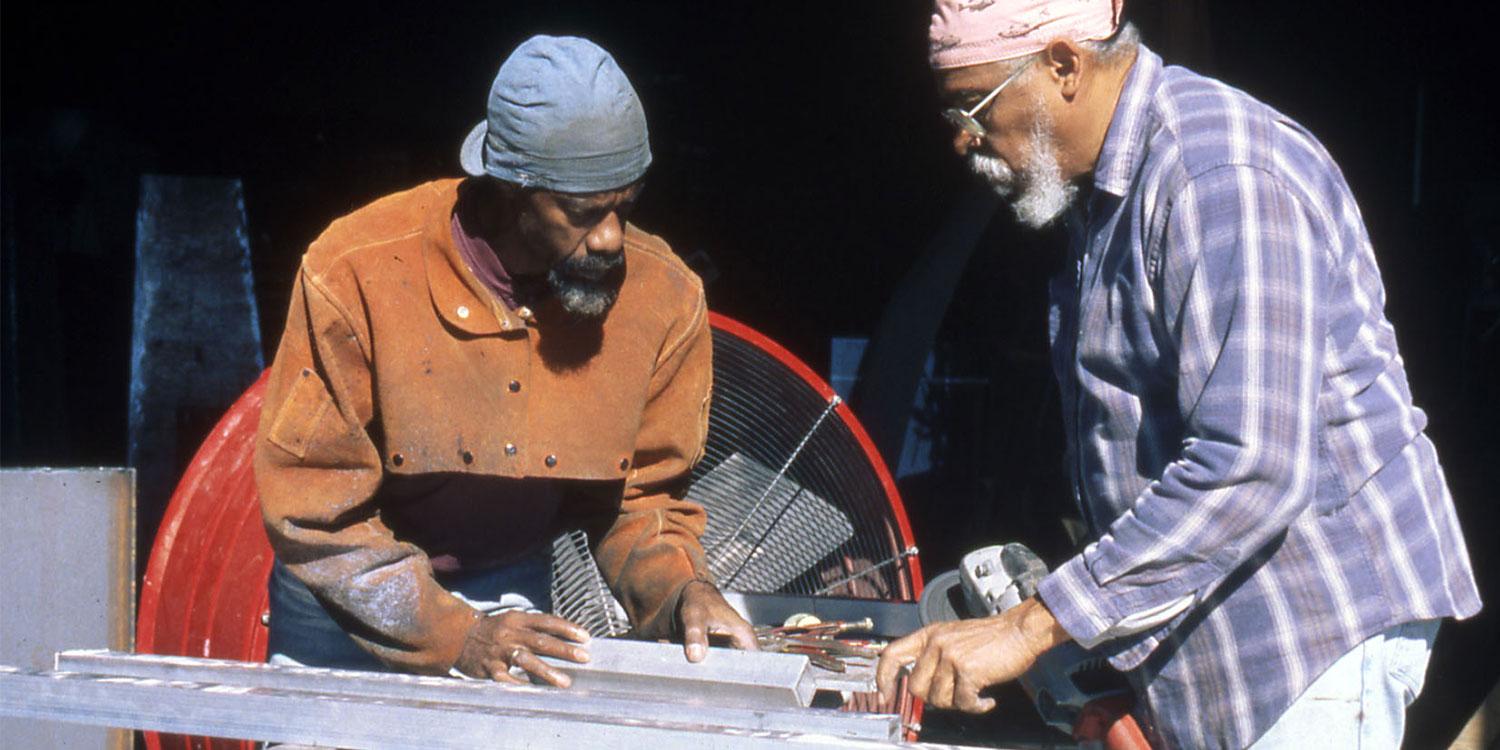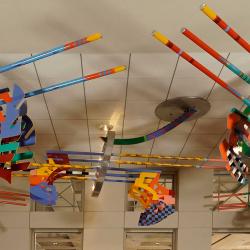John Scott
New Orleans, LA
John Scott
On the topic of what art is: John T. Scott says, "Well, I think that all art, regardless of media, starts with a particular idea, and if it's really good, it moves to a universal idea. I don't think, art is about art; I think it's about everything else. So, it's like putting all of these ingredients in, and hopefully they are arranged in such a way that anybody can relate to them. You know, I'd like some guy in Taiwan that doesn't speak English to see a piece of my work and respond. Not necessarily to the New Orleans culture that's there, but to the human language that's there. That's the goal. Someone once asked me what was it that I was trying to do with the stuff I do, and I explained that I would like to do with visual language what African American artists have done with gospel, blues, and jazz. And if I can move somebody's spirit, I'd like to do that too."
On the topic of music-based influences; John T. Scott replies with, "What I've been attempting to do for the last forty years, I guess, is to see things with what I describe as “jazz thinking”, and it actually came from listening to musicians. It dawned on me that if you listen to a really good jazz group three things are always evident. That is, the jazz musicians are always in the "now" while you're hearing it, but these guys are incredibly aware of where they have been, and have unbelievable anticipation of where they are going. They do all three of these things at the same time. And I refer to that as jazz thinking, or spherical thinking. What I mean by that is, for example, if you can imagine that all your ideas, past, present, and future are all inter-connected like points on a glass globe, and you are suspended in the middle so that if you look up, you can understand down because they are connected, and as you move forward you understand backwards because they are always connected. To me, that's jazz thinking. It's improvisational thinking in the sense that I don't have to contrive some system of connecting two things that don't seem related because I understand the relationship."
When asked about New Orleans, which has a huge influence on the artist’s work, John T. Scott commented, "New Orleans is the only city that I've been in that if you listen, the sidewalks will speak to you. My leaving New Orleans is about as likely as Dracula leaving his casket. I find that this place informs what I am, what I do, and so forth. Now, it does not mean that my ideas are provincial. It does not mean that my ideas are regional or local. I think that any art that is worth its salt will start with a particular idea and in the process of becoming, the art is elevated to what is universal. I think the humanity of this city, the culture of this city, the life of this city is as human as you are going to find it anywhere in the world. And if I can distill that, and distill my world view through that, I might be able to make a unique thing that will have meanings to others."
Artist Statement Credit to: Richard Powell's book: Circle Dance: The Art of John T. Scott (book forward) and also an interview w/ John T. Scott by Daniel Piersol
Fast Facts
Name: John T. Scott
Place of Birth: New Orleans, LA
Education:
B.A. – Xavier University of Louisiana, 1960
M.F.A. – Michigan State University, 1965
Honorary Doctor of Humanities – Michigan State University, 1995
Doctor of Humanities – Tulane University, 1997
Significant or special training:
Studied under painter Charles Pollock during his MFA studies at Michigan State University.
In 1983, John Scott received a grant to study under the internationally renown sculptor George Rickey.
Notable or memorable instructors or mentors:
Sr. Lurana Neely, SBS and Numa Rousseve.
Collaborators: Frank Hayden, Martin Payton, Ron Bechet, Cliff Webb, William Pajaud
Particular field of study or class work:
Scott's work frequently displayed themes related to African-American life, particularly the rich Afro-Caribbean culture and musical heritage of New Orleans. One of the best examples of this style is his sculpture called ''Ocean Song" located in Woldenberg Park (New Orleans). Scott said the rings at the top of the sculpture represented circle dances performed by slaves who frequented Congo Square.
Major Influences:
Sr. Lurana Neely, SBS, Professor Numa Rousseve
Favorite materials or media:
Woodcut, sculpture, paintings, printmaking, and collages
School or university affiliation (when Convention Center acquired artwork):
After receiving his Master’s in Fine Arts, John Scott returned to Xavier University to teach (printmaking, ceramics, painting, calligraphy, drawing, bronze casting, and papermaking) for 40 years.
Stay in Touch
Sign up to receive news about the PCC Art Collection at the Pennsylvania Convention Center.


